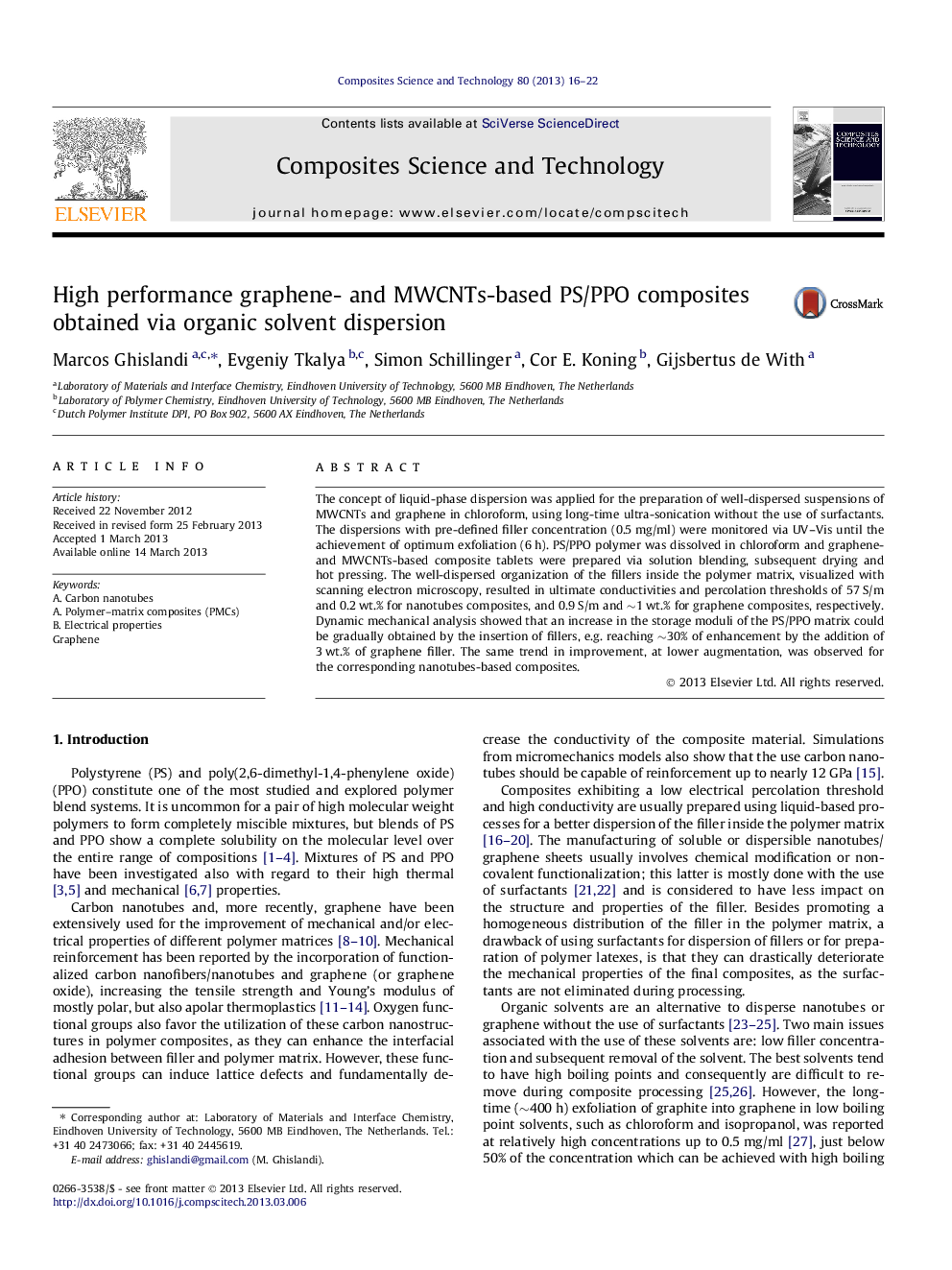| Article ID | Journal | Published Year | Pages | File Type |
|---|---|---|---|---|
| 7215983 | Composites Science and Technology | 2013 | 7 Pages |
Abstract
The concept of liquid-phase dispersion was applied for the preparation of well-dispersed suspensions of MWCNTs and graphene in chloroform, using long-time ultra-sonication without the use of surfactants. The dispersions with pre-defined filler concentration (0.5Â mg/ml) were monitored via UV-Vis until the achievement of optimum exfoliation (6Â h). PS/PPO polymer was dissolved in chloroform and graphene- and MWCNTs-based composite tablets were prepared via solution blending, subsequent drying and hot pressing. The well-dispersed organization of the fillers inside the polymer matrix, visualized with scanning electron microscopy, resulted in ultimate conductivities and percolation thresholds of 57Â S/m and 0.2Â wt.% for nanotubes composites, and 0.9Â S/m and â¼1Â wt.% for graphene composites, respectively. Dynamic mechanical analysis showed that an increase in the storage moduli of the PS/PPO matrix could be gradually obtained by the insertion of fillers, e.g. reaching â¼30% of enhancement by the addition of 3Â wt.% of graphene filler. The same trend in improvement, at lower augmentation, was observed for the corresponding nanotubes-based composites.
Related Topics
Physical Sciences and Engineering
Engineering
Engineering (General)
Authors
Marcos Ghislandi, Evgeniy Tkalya, Simon Schillinger, Cor E. Koning, Gijsbertus de With,
